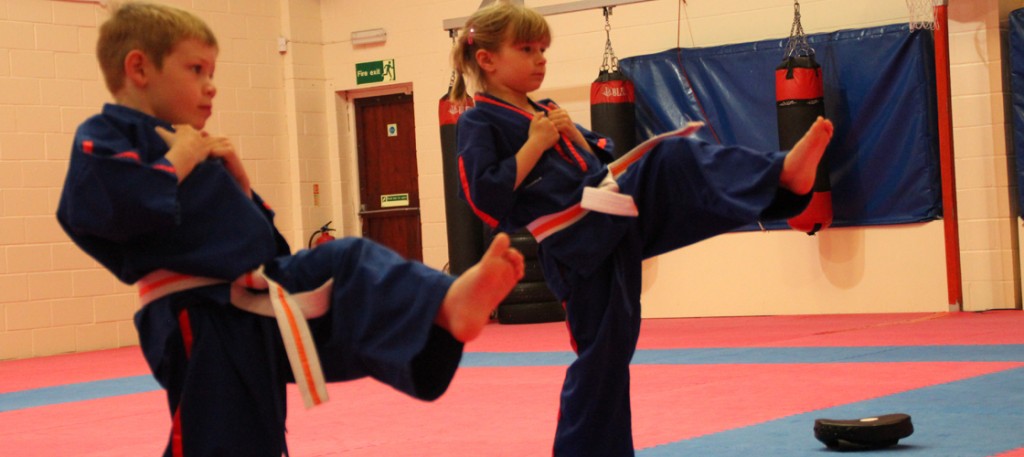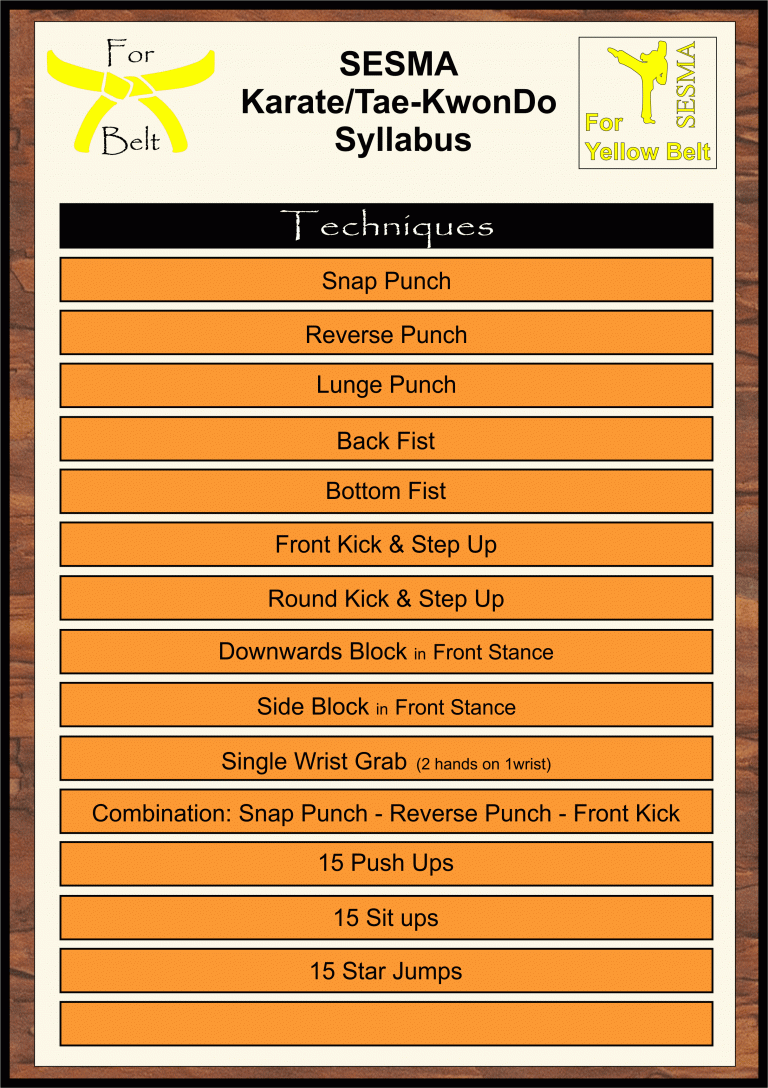Why do we teach combinations?
The teaching of combinations allows the student to learn to put individual techniques together.
This includes the learning of body movement before, between and after the individual techniques, which we call “Transition”.
These then can be used in sparring or in a real situation like the street/playground.
Combinations & Children
Younger children have difficulty with multiple instructions, their intellectual development isn’t at the point that they find processing more than 3 instructions a challenge.
That is why must of the syllabus combinations are in sets of 3 moves, to make it easy for younger martial artist to process.
Some children love sequences and they tend to become favorable to kata learning and lean away from sparring.
Others may find sequences a challenge and the whole process learning a kata is complete torture to them. These martial artist will find kickboxing suits them more and will excel at sparring.

Grading Combinations
We have set combinations for each grade through the syllabus and these combinations include techniques that the student should be competent with. E.g. Red to Yellow Belt combination: Snap Punch – Reverse Punch – Front Kick
A basic combination but set at the correct level for a Red Belt.
They are learning foot movement on the Snap punch, body movement on the Reverse punch and transition from punch to the front kick.
Also with using basic techniques that they first learnt in their martial arts class, the student has less to remember and can concentrate on the pattern of the combination and work more on the technique and transition of the combination.
Teaching Grading Combinations
When teaching a new student, newly graded student or a new combination break the combination down in to individual techniques and then build them in stages.
Taking the Red to Yellow Belt as an example:
Snap Punch 5 reps each side
Snap Punch – Reverse Punch 5 Reps each side
Snap Punch – Reverse Punch – Front Kick 5 reps each side.
When teaching Black Belt combinations, it is advisable to break the combination down into smaller combinations and then build them together.
Example:
Downwards Block – Reverse Punch – Rising Block – Reverse Punch 5reps each side
Step Back Fist – Inside Block – Ridge Hand 5reps each side
Front Foot Sweep – Reverse Punch 5reps each side
This helps the student to process the combination and to remember the techniques.

Disguising Repetition
Remember the formula for disguising repetition:
Technique + Attribute + Equipment + People = Disguised Repetition
- Work on the techniques needed for the combination
- Work on the transition of the combination
- Practice the combination on a bag
- Padwork with a partner going through the combination
- Blocks and counter using the combinations
- Sparring only using the combinations
Technique
Any technique from the syllabus
Attributes
Speed Power Flexibility
Strength Stamina Balance
Reaction Time Timing
Accuracy Awareness
Equipment
Focus Pads Punch Bags
Kick Shields Sticking Kicks
Kick Paddles Bands
Hand Weights
People
Individual
Partnered
Group
How to build up combinations
Building up your own combinations or asking students to devise they own can be challenging as you feel you want them to be different to the grading combinations.
Remember that the grading combinations use the most popular techniques, so there will be an overlap of techniques.
If you are building your own combinations for a class, think on how the body mechanics of the techniques and the flowing of the transition between each move.
The easier the transition/flow of the techniques the easier the students will find the combination and more positive they will be. If a student finds it difficult, then they may become negative and not enjoy the class.
When letting students build their own combinations, they will use their most favourite techniques.
This is ok with lower grades, also if the transition is a little off don’t worry about it too much.
Higher grades will be more adventurous as they know more techniques and the transition may feel disjointed…literally. You could at this point demonstrate how to improve the combination and transition, explaining how & why.
Power of 3 & 4
Using the Power of 3 & 4 for students to build combinations works really well especially when using focus pads. It allows the student to think of the combination, remember the combination and practice the techniques of the combination.
Example Combination using the Power of 3:
Jab – Cross – Front Leg Side Snap (Snap Punch – Reverse Punch – Front Leg Side Snap)
3 x Jab
3 x Jab – Cross
3 x Jab – Cross – Front Leg Side Snap
3 techniques combination, broken down in to 3 and repeated 3 times.
This would be the same concept with a 4 technique combination using the Power of 4
Pitfall 1…
The instructor gets more caught up in tiring the class out.
Where it is good to push your students, if it becomes your number one focus, your students will be fit, but lack the technical ability necessary to grade.
Often when they are tired they will develop bad habits such as high stances, sloppy technique and a lack of focus and precision.
In many cases, you can see students taking these short cuts just to keep up with the class (or your count). This inevitably will see them go backwards in standard.
Pitfall 2…
The instructor attempts to keep the students interested by doing many different combinations. Variety is important, but if it becomes a major focus the students may not be getting the repetition they require to improve. Disguising Repetition
Pitfall 3…
The instructor focuses ‘too much’ on explaining technique and the class drags on.
Technique is important, but if you spend too much time explaining the technical aspect of the combination, the class may feel like it’s dragging on.
Use enough explanation to get the full point across, and then get the class working on the combination. Repetition is the mother of skill.
Tips
Find a good balance between technique and exercise.
Motivate them to do it right!
They should know what to focus on for each part and aim to do it with precise technique.
Give your students feedback and praise at every opportunity. As they put the combination together, your praise and positive feedback will boost their confidence level which will improve their ability to perform it with greater focus and intensity

